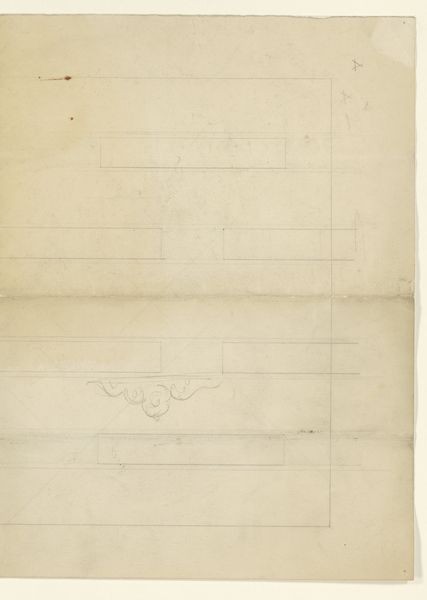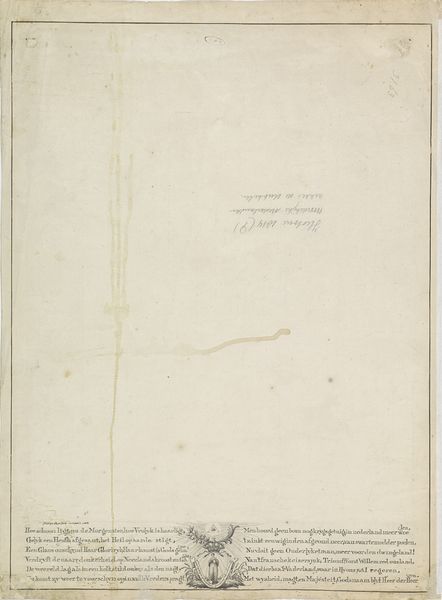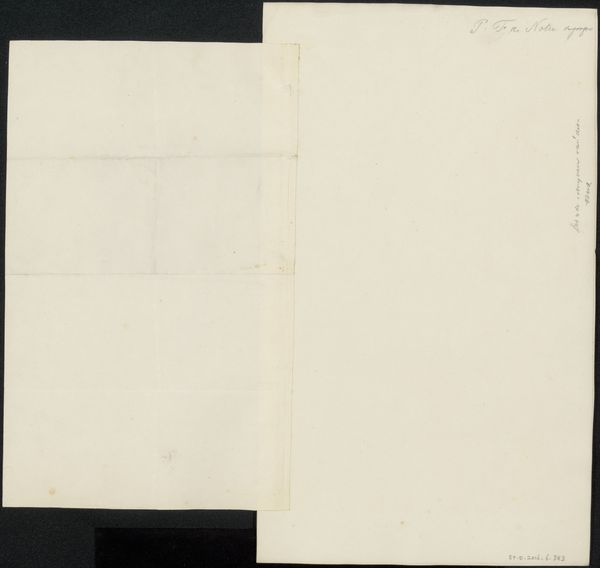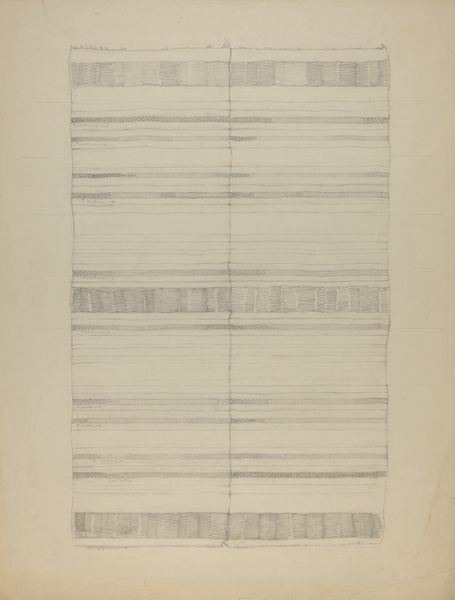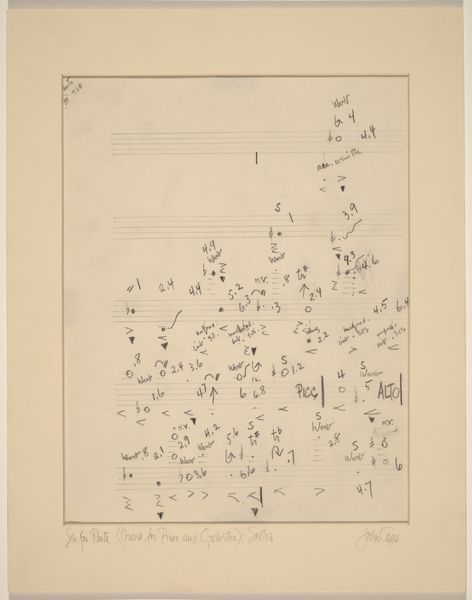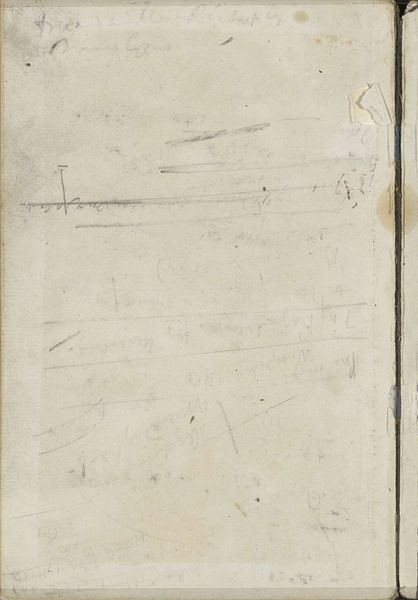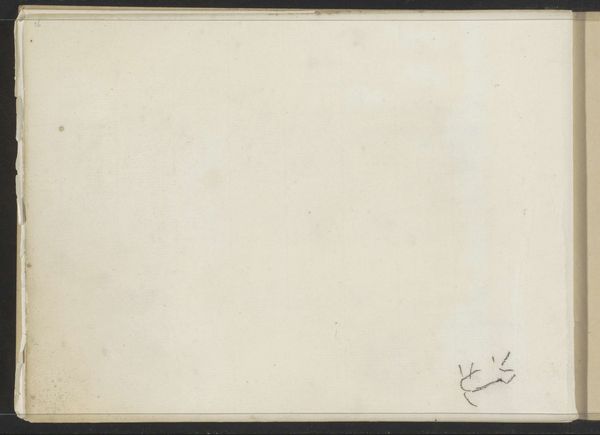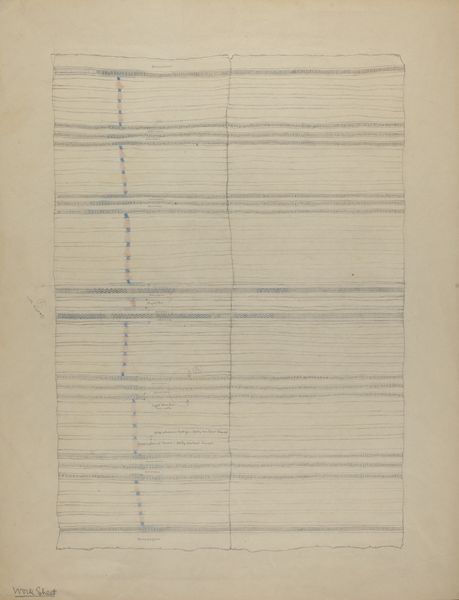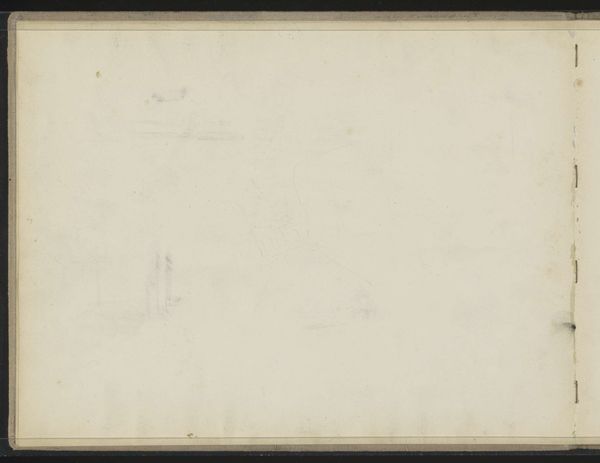
drawing, paper, ink
#
drawing
#
conceptual-art
#
paper
#
ink
#
black-mountain-college
#
abstraction
#
line
Dimensions: overall: 27.9 x 21.5 cm (11 x 8 7/16 in.)
Copyright: National Gallery of Art: CC0 1.0
Curator: John Cage, primarily known for his avant-garde musical compositions, created this work on paper using ink; it’s a piece titled "Solo for Violin (Concert for Piano and Orchestra): Sketch". Editor: My immediate response is…serenity. It's so minimal. Just a few lines and marks. The emptiness itself feels deliberate, like a Zen garden. Is that Cage's intent? Curator: That’s a very insightful read, particularly considering Cage's engagement with Eastern philosophies. During the time Cage created this sketch, he was developing what he termed "chance operations." Essentially relinquishing authorial control through processes such as tossing coins or using the I Ching to determine aspects of the composition. It highlights the importance of removing the composer’s ego. Editor: Ah, chance! I see the mark of the I Ching. I see also that the placement of each symbol becomes hugely significant. They seem isolated but resonant. Are these familiar musical symbols? What can they mean here, divested of context? Curator: That's where Cage is intentionally provocative. By isolating these seemingly standard elements—musical staff lines, various symbolic marks—he invites the viewer, or, perhaps, the performer, to engage with their own understanding. Editor: Do you think that audiences or performers feel lost when faced with what some could consider the bare minimum? Curator: There have always been debates about how Cage's strategies affect the understanding of composition. Some saw the result as total cacophony, others praised him for allowing a sound to be purely what it is. Consider, that alongside abstraction becoming so popular, the concept of musicality also underwent a revolution! The institutions of art were forced to grapple with an existential issue regarding "what constitutes Art". Editor: In other words, he transformed absence itself into presence? I will remember that during my next listening session. It encourages active engagement, forcing us to confront what we bring to the artwork and, in a way, find meaning within ourselves. Curator: Exactly. Cage saw sound all around us, and it could be transformative once it became acceptable and not rejected. I am reminded that there's a silent Cage work—a composition that challenges our notion of music. Editor: Very good, these silent or barely visible pieces hold the key to hearing, seeing, and sensing in the expanded, new form. Thank you for walking us through this experience.
Comments
No comments
Be the first to comment and join the conversation on the ultimate creative platform.
